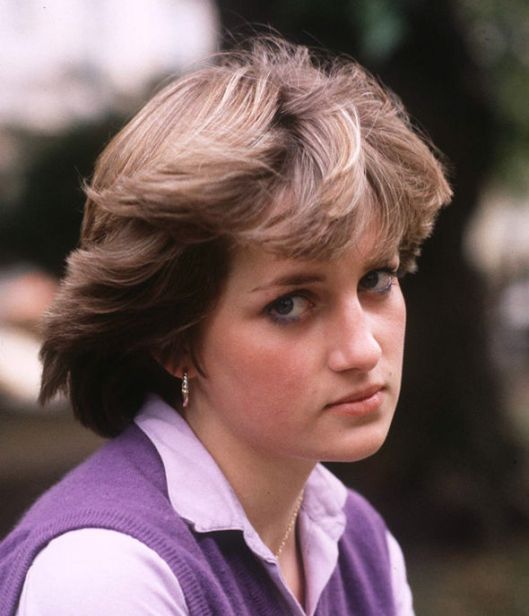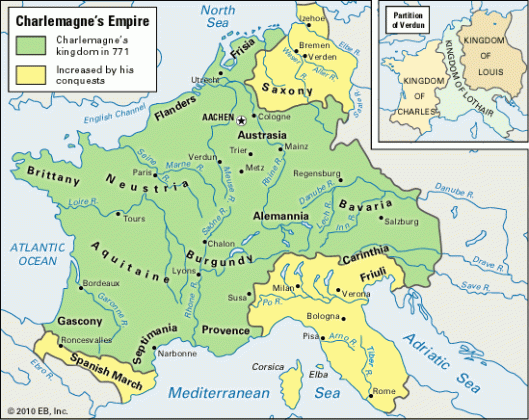Prince Albert of Saxe-Coburg and Gotha (German: Franz Albert August Karl Emanuel. August 26, 1819 – December 14, 1861) was born at Schloss Rosenau, near Coburg in the German Confederation of the Rhine, the second son of Ernst III, Duke of Saxe-Coburg-Saalfeld, and his first wife, Louise of Saxe-Gotha-Altenburg. Albert’s future wife, Queen Victoria of the United Kingdom, was born earlier in the same year with the assistance of the same midwife, Charlotte von Siebold.

Albert was baptised into the Lutheran Evangelical Church on September 19, 1819 in the Marble Hall at Schloss Rosenau with water taken from the local river, the Itz. His godparents were his paternal grandmother, Countess Augusta Reuss of Ebersdorf, the Dowager Duchess of Saxe-Coburg-Saalfeld; his maternal grandfather, August, Duke of Saxe-Gotha-Altenburg; Emperor Franz I of Austria; Prince Albert Casimir of Saxony, the Duke of Teschen; and Emanuel, Count of Mensdorff-Pouilly.
In 1825, Albert’s great-uncle, Friedrich IV, Duke of Saxe-Gotha-Altenburg, died. His death led to a realignment of Saxon duchies the following year and Albert’s father became the first reigning Duke Ernst I of Saxe-Coburg-Gotha. Albert and his elder brother, Ernst, spent their youth in a close companionship marred by their parents’ turbulent marriage and eventual separation and divorce. After their mother was exiled from court in 1824, she married her lover, Alexander von Hanstein, Count of Polzig and Beiersdorf. She presumably never saw her children again, and died of cancer at the age of 30 in 1831.

The brothers were educated privately at home by Christoph Florschütz and later studied in Brussels, where Adolphe Quetelet was one of their tutors. Like many other German princes, Albert attended the University of Bonn, where he studied law, political economy, philosophy and the history of art. He played music and excelled at sport, especially fencing and riding. His tutors at Bonn included the philosopher Fichte and the poet Schlegel.
Marriage to Queen Victoria
The idea of marriage between Albert and his cousin, Victoria, was first documented in an 1821 letter from his paternal grandmother, Countess Augusta Reuss of Ebersdorf, the Dowager Duchess of Saxe-Coburg-Saalfeld, who said that he was “the pendant to the pretty cousin”. By 1836, this idea had also arisen in the mind of their ambitious uncle Leopold, who had been King of the Belgians since 1831. At this time, Victoria was the heir presumptive to the British throne. Her father, Prince Edward, Duke of Kent and Strathearn, the fourth son of King George III of the United Kingdom and Queen Charlotte (née Duchess of Mecklenburg-Streitz) had died when she was a baby, and her elderly uncle, King William IV, had no legitimate children. Her mother, the Duchess of Kent, was the sister of both Albert’s father—the Duke of Saxe-Coburg and Gotha—and King Leopold.
Leopold arranged for his sister, Victoria’s mother, to invite the Duke of Saxe-Coburg and Gotha and his two sons to visit her in May 1836, with the purpose of meeting Victoria. William IV, however, disapproved of any match with the Coburgs, and instead favoured the suit of Prince Alexander, second son of the Prince of Orange (future King Willem II of the Netherlands). Victoria was well aware of the various matrimonial plans and critically appraised a parade of eligible princes. She wrote, “[Albert] is extremely handsome; his hair is about the same colour as mine; his eyes are large and blue, and he has a beautiful nose and a very sweet mouth with fine teeth; but the charm of his countenance is his expression, which is most delightful.” Alexander, on the other hand, she described as “very plain”. Victoria wrote to her uncle Leopold to thank him “for the prospect of great happiness you have contributed to give me, in the person of dear Albert … He possesses every quality that could be desired to render me perfectly happy.”Although the parties did not undertake a formal engagement, both the family and their retainers widely assumed that the match would take place.

Victoria came to the throne aged eighteen on June 20, 1837. Her letters of the time show interest in Albert’s education for the role he would have to play, although she resisted attempts to rush her into marriage. In the winter of 1838–39, the prince visited Italy, accompanied by the Coburg family’s confidential adviser, Baron Stockmar.
Albert returned to the United Kingdom with Ernst in October 1839 to visit the Queen, with the objective of settling the marriage. Albert and Victoria felt mutual affection and the Queen proposed to him on October 15, 1839. Victoria’s intention to marry was declared formally to the Privy Council on November 23, and the couple married on February 10, 1840 at the Chapel Royal, St James’s Palace. Just before the marriage, Albert was naturalised by Act of Parliament, and granted the style of Royal Highness by an Order in Council.
Initially Albert was not popular with the British public; he was perceived to be from an impoverished and undistinguished minor state, barely larger than a small English county. The British Prime Minister, Lord Melbourne, advised the Queen against granting her husband the title of “King Consort”; Parliament also objected to Albert being created a peer—partly because of anti-German sentiment and a desire to exclude Albert from any political role.

Melbourne led a minority government and the opposition took advantage of the marriage to weaken his position further. They opposed the ennoblement of Albert and granted him a smaller annuity than previous consorts, £30,000 instead of the usual £50,000. Albert claimed that he had no need of a British peerage, writing: “It would almost be a step downwards, for as a Duke of Saxony, I feel myself much higher than a Duke of York or Kent.” For the next seventeen years, Albert was formally titled “HRH Prince Albert” (his territorial designation, Saxe-Coburg-Gotha, was dropped upon marriage) until, on June 25, 1857, Victoria formally granted him the title Prince Consort. This shoddy treatment of Prince Albert was not repeated with the consort of the next Queen Regnant, Elizabeth II, who’s husband, Prince Philip of Greece and Denmark, was made a peer-of-the-realm as the Duke of Edinburgh and was made a Prince of the United Kingdom in his own right in 1957.




Initially he felt constrained by his role of prince consort, which did not afford him power or responsibilities. He gradually developed a reputation for supporting public causes, such as educational reform and the abolition of slaveryworldwide, and was entrusted with running the Queen’s household, office and estates. He was heavily involved with the organisation of the Great Exhibition of 1851, which was a resounding success.
Victoria came to depend more and more on Albert’s support and guidance. He aided the development of Britain’s constitutional monarchy by persuading his wife to be less partisan in her dealings with Parliament—although he actively disagreed with the interventionist foreign policy pursued during Lord Palmerston’s tenure as Foreign Secretary.

A man of progressive and relatively liberal ideas, Albert not only led reforms in university education, welfare, the royal finances and slavery, he had a special interest in applying science and art to the manufacturing industry. The Great Exhibition of 1851 arose from the annual exhibitions of the Society of Arts, of which Albert was President from 1843, and owed most of its success to his efforts to promote it. Albert served as president of the Royal Commission for the Exhibition of 1851, and had to fight for every stage of the project.
In the House of Lords, Lord Brougham fulminated against the proposal to hold the exhibition in Hyde Park. Opponents of the exhibition prophesied that foreign rogues and revolutionists would overrun England, subvert the morals of the people, and destroy their faith.Albert thought such talk absurd and quietly persevered, trusting always that British manufacturing would benefit from exposure to the best products of foreign countries.


The Queen opened the exhibition in a specially-designed and -built glass building known as the Crystal Palace on May 1, 1851. It proved a colossal success. A surplus of £180,000 was used to purchase land in South Kensington on which to establish educational and cultural institutions—including the Natural History Museum, Science Museum, Imperial College London and what would later be named the Royal Albert Hall and the Victoria and Albert Museum. The area was referred to as “Albertopolis” by sceptics.
In August 1859, Albert fell seriously ill with stomach cramps. He had an accidental brush with death during a trip to Coburg in the autumn of 1860, when he was driving alone in a carriage drawn by four horses that suddenly bolted. As the horses continued to gallop toward a stationary wagon waiting at a railway crossing, Albert jumped for his life from the carriage. One of the horses was killed in the collision, and Albert was badly shaken, though his only physical injuries were cuts and bruises. He confided in his brother and eldest daughter that he had sensed his time had come.
In March 1861, Victoria’s mother and Albert’s aunt, the Duchess of Kent, died and Victoria was grief-stricken; Albert took on most of the Queen’s duties, despite continuing to suffer with chronic stomach trouble. The last public event he presided over was the opening of the Royal Horticultural Gardens on June 5, 1861. In August, Victoria and Albert visited the Curragh Camp, Ireland, where the Prince of Wales was doing army service. At the Curragh, the Prince of Wales was introduced, by his fellow officers, to Nellie Clifden, an Irish actress.

By November, Victoria and Albert had returned to Windsor, and the Prince of Wales had returned to Cambridge, where he was a student. Two of Albert’s young cousins, brothers King Pedro V of Portugal and Prince Ferdinand, died of typhoid fever within five days of each other in early November. On top of this news, Albert was informed that gossip was spreading in gentlemen’s clubs and the foreign press that the Prince of Wales was still involved with Nellie Clifden. Albert and Victoria were horrified by their son’s indiscretion, and feared blackmail, scandal or pregnancy. Although Albert was ill and at a low ebb, he travelled to Cambridge to see the Prince of Wales on November 25 to discuss his son’s indiscreet affair. In his final weeks Albert suffered from pains in his back and legs.

When the Trent Affair—the forcible removal of Confederate envoys from a British ship by Union forces during the American Civil War—threatened war between the United States and Britain, Albert was gravely ill but intervened to soften the British diplomatic response and thus averting Britain getting involved in the US Civil War.

On December 9, one of Albert’s doctors, William Jenner, diagnosed him with typhoid fever. Albert died at 10:50 p.m. on December 14, 1861 in the Blue Room at Windsor Castle, in the presence of the Queen and five of their nine children. The contemporary diagnosis was typhoid fever, but modern writers have pointed out that Albert’s ongoing stomach pain, leaving him ill for at least two years before his death, may indicate that a chronic disease, such as Crohn’s disease, renal failure, or abdominal cancer, was the actual cause of death.

Prince Albert, Queen Victoria and their nine children, 1857. Left to right: Alice, Arthur, Albert (Prince Consort), Albert Edward (Prince of Wales), Leopold, Louise, Queen Victoria with Beatrice, Alfred, Victoria and Helena.
Prince Albert and Queen Victoria had 9 children, 4 sons and 5 daughters. Prince Albert’s 42 grandchildren included four reigning monarchs: King George V of the United Kingdom; Wilhelm II, German Emperor; Ernst-Ludwig, Grand Duke of Hesse and By Rhine and Charles Edward, Duke of Saxe-Coburg and Gotha, and five consorts of monarchs: Queens Maud of Norway, Sophia of Greece, Victoria Eugenie of Spain, Marie of Romania, and Empress Alexandra of Russia. Albert’s many descendants include royalty and nobility throughout Europe.





















































